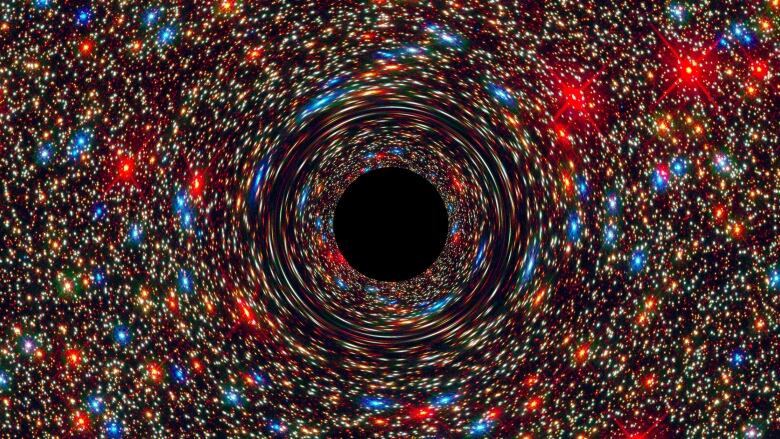Black hole as massive as 17 billion suns surprises astronomers
Discovery may mean monster black holes are far more common than thought

German, U.S. and Canadian scientists have stumbled upon one of the largest supermassive black holes discovered to date in a place they never would have expected to find such a monster.
The new black hole, located at the centre of the galaxy NGC 1600 in the constellation Eridanus, is 17 billion times the mass of the sun. That makes it only a little smaller than the biggest black hole on record, which is 21 billion times the mass of the sun.
But while all other giant supermassive black holes bigger than 10 billion times the mass of the sun are in parts of the universe crammed with hundreds of large galaxies, NGC 1600 is in "a cosmic backwater" with just 20 or so galaxies, said Chung-Pei Ma, a University of California-Berkeley astronomer who helped make the discovery, in a news release.
She likened it to discovering a huge skyscraper in a small town rather than New York City's Manhattan borough.
The black hole also stumped astronomers by not following a well-established relationship between the mass of black hole and the mass of the bulge of stars at the centre of its host galaxy.

"We were surprised that the black hole in NGC 1600 is 10 times more massive than predicted by the mass of the galaxy," said Jens Thomas, an astronomer with the Max Planck Institute for Extraterrestrial Physics in Germany and the lead author of a new paper in Nature describing the discovery.
The position of the stars surrounding the black hole suggested it was once a pair of black holes that later merged.
The discovery may mean that the mass of extremely massive black holes may not be related to the mass of the stars near the centre of their host galaxy, and there may be far more monster black holes in the universe than astronomers had expected, in other small galaxy clusters.
The newly discovered black hole is currently dormant it's not actively gobbling up the dust and gas around it so it's not emitting any radiation. Scientists discovered it by measuring its influence on the velocities of nearby stars using the Gemini North 8-metre telescope on Mauna Kea, Hawaii.












_(720p).jpg)


 OFFICIAL HD MUSIC VIDEO.jpg)
.jpg)



























































































